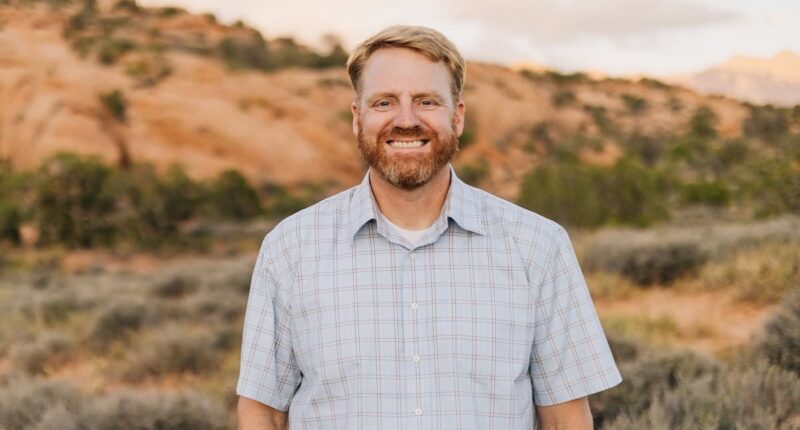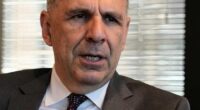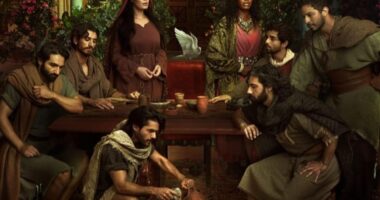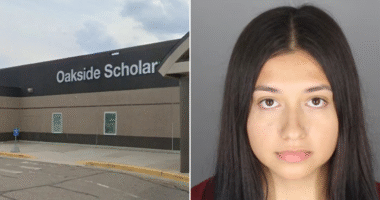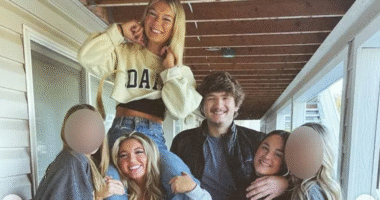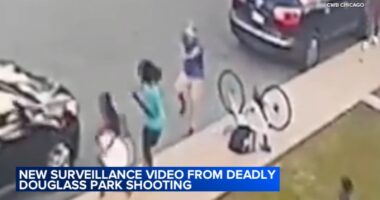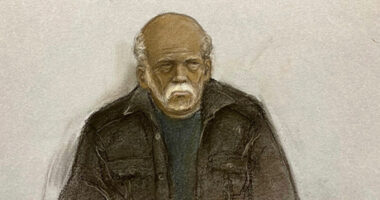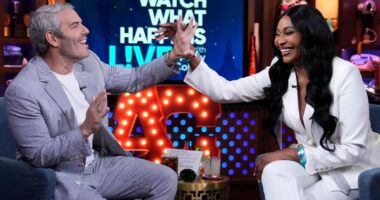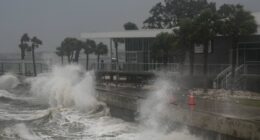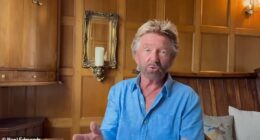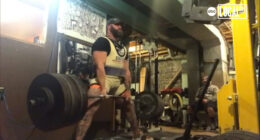I’m told I shouldn’t be alive.
While on patrol in Southeast Utah as a state ranger, I was suddenly ambushed and shot with 40 caliber hollow point rounds nine times, then left for dead out in the desert.
I lost massive amounts of blood, and then some, that night as I slipped in and out of consciousness.
After the attack, I was in a coma for three and a half weeks, and to maintain secrecy and safety, I was kept hidden in the maternity ward under an assumed name due to intense media attention and concerns for my well-being if the perpetrator returned.
That evening in November 2010 was a ‘warm before the storm’ kind of night.
The incident occurred during an overtime shift when I was searching for underage individuals partying illegally in the high desert near Moab. My lieutenant and I had decided to split up to cover more ground and locate the unauthorized bonfires being lighted in the area.
Driving into the parking lot at the Poison Spider Mesa trailhead around 8:30 p.m., I noticed an individual sleeping in the back seat of a Pontiac Grand Am.
After knocking on the window a few times, the man sat up and opened his car door. I told him he couldn’t sleep there, directed him to some alternatives and started walking back to my truck.

Brody Young was working an overtime shift, looking for underage kids partying illegally in the high desert area around Moab, when he was shot nine times

Young’s patrol truck at the Poison Spider Mesa trailhead

Young was patrolling the remote desert area of Canyonlands National Park
What followed in the next few seconds changed my life.
Just before I reached the door, a shot rang out and a slug tore through my left arm just below the shoulder, blowing up the humerus bone into a score of fragments.
The momentum of that bullet spun me 180 degrees. Looking back over my right shoulder, I saw him walking toward me, his advance garishly illuminated by repeated muzzle flash.
Three more shots hit me.
A bullet-resistant vest is part of my uniform.
Those three shots, a detective later told me, formed a ‘close pattern’ in my back.
One bullet got through the vest, and it ended up lodged against a vertebra in my lumbar region.
That fusillade knocked me to the ground. Time slowed.
The shooter kept advancing, bearing down until he was standing over me, still firing.
After what felt like several eternities, the shooting stopped. The desert went quiet.
He turned to walk back to his car, leaving me for dead. He’d fired 15 rounds and hit me with nine, not including the slug embedded in my wallet, tucked as usual in the right cargo pocket of my uniform pants, where it gave its life to save my femur.
Everything in my life came down to the choice I made in the next moment.
I could let go, check out. I mean, I was as good as gone, right? Surely no one could blame me if I chose then to slip the surly bonds of my wrecked body and proceed to the next realm – to whatever lies in store for us at the end of this life.

The driver’s side of Young’s truck on Nov. 19, 2010. He lost nearly all of his blood that night

As he lay in a coma for three weeks, his family – and doctors – weren’t sure if he’d survive

An X-ray of Young’s chest – he still has fragments of bullets lodged in his body. One grazed the left ventricle of his heart, another pierced his left lung
Or, I could push back against such a sad fate and see what happened.
It took about half of a second to make that decision.
My chances of seeing another sunrise weren’t looking really good in that moment. This gunman, whoever he was, might end up taking my life, but I wasn’t going to go quietly.
As he walked away, I took inventory. I didn’t know I’d been shot with hollow-point slugs, designed to expand on impact, creating more tissue damage, and that I was now carrying shrapnel in my liver, small intestine, groin, both arms and right hip.
One bullet grazed the left ventricle of my heart. Another had pierced the lower lobe of my left lung.
And there was the slug in the L2 region of my spine.
I knew I had been shot and that my left arm was throbbing with pain, but I didn’t realize I was in such bad shape. But I could move, I discovered – I could sit up, I could stand and walk.
And so, to the gunman’s surprise and disappointment, I did. Well, I wasn’t walking so much as I was lurching like I was drunk, but I was upright and mobile. I was alive.
Then, he headed back toward the truck, intending, I surmised, to finish me off.
My training kicked in. I took cover on the far side of my Ford F-150. I’m not sure he was aware, but I had a gun, too. So I reached for my service weapon. I reached for it again.
I reached for it a third time, but my left arm was no longer taking requests from my brain. With its humerus bone shattered, the arm became a flopping, useless meat sock, flailing around of its own volition. It even swung up once and clobbered me in the face.
That’s the kind of day I was having. After trying several times to draw with my left hand, I had an epiphany, ‘You idiot, use your other hand. You’ve trained to do this.’
I fired back, injuring him in the process. To what extent, I never found out. My adrenaline had run out, and I fell unconscious. I believe he thought I had died, so he left.
I woke up a short time later and found the strength to crawl to my truck and call for help on my radio.
I laid there for 12 long minutes until help arrived.
I was transported by ambulance to Moab. Then, with a look of death and the last two bags of life-saving blood on my chest, I was intubated and flown by helicopter to Grand Junction.
Waking up after three and a half weeks in a coma, I was consumed with anxiety and fear. I couldn’t sleep, couldn’t think clearly. I couldn’t talk with a tracheotomy. I was stuck.

Young’s wife and three children relocated to Colorado while he lay in hospital recovering from the shooting

He returned to work as a park ranger in Utah and gives motivational talks around the country
So I begged God to help me find peace. What surprised me was that he delivered it. But first, I had to find forgiveness.
We all have a choice in how we interact with the people who cross our paths. My family and I had a choice that night – and in the weeks, months and years that followed – to either live in fear and hate or to forgive and find joy.
Recovery was hard.
I spent almost a year in physical therapy, and still to this day, I live with bullet fragments lodged in my body.
Eventually, I made progress. I even went back to working full duty as a state ranger.
But those feelings of anxiety and fear toward my attacker? They dissipated early on, setting a foundation for clear thinking and focused healing.
I never had the chance to forgive my would-be killer to his face. He disappeared into the desert, and his sun-bleached bones were found by hikers in a nearby cave on Christmas Eve five years later.
I’m not sure it matters much, but I hope he’d have accepted my forgiveness had I had the chance to tell him. To be forgiven is a gift, but to accept it and to forgive oneself is a greater and more difficult virtue.
Nine Miracles: When Bullets Can’t Kill and Hope Prevails by Brody Young and Austin Murphy is published by Radius Book Group, June 10. Brody Young works as a park ranger with the rank of lieutenant in Utah, and gives motivational talks around the country about his incredible story of survival.
